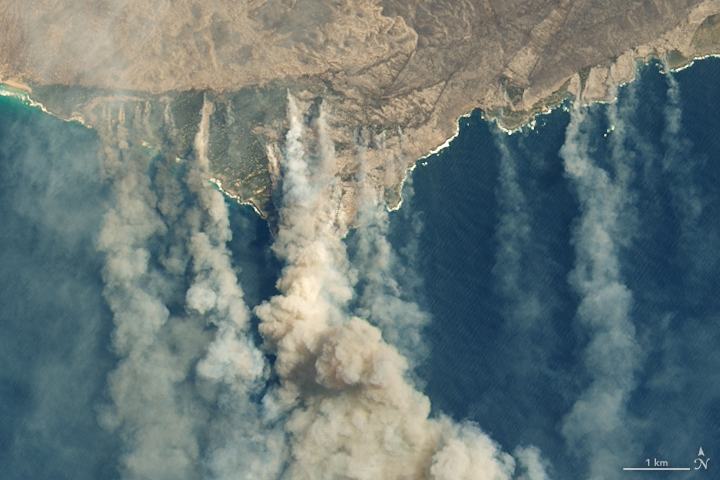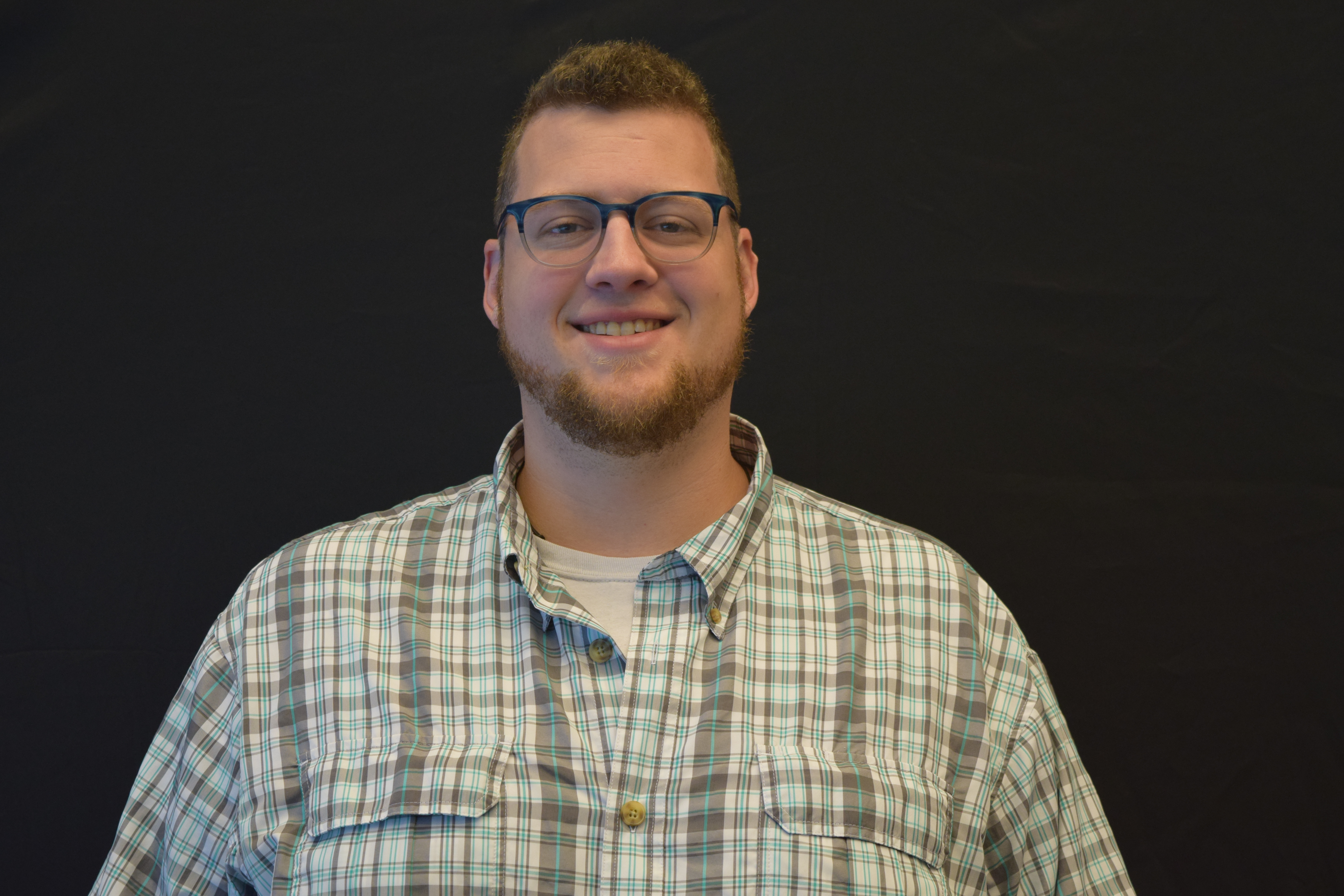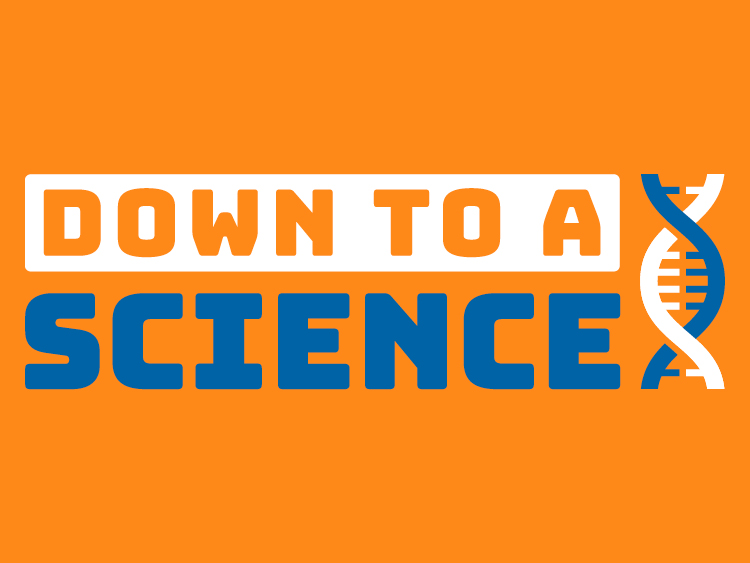
Approximately 30% of Australia’s Kangaroo Island has burned. This image was taken on 9 January 2020 from the Landsat 8 observation satellite / Image courtesy of NASA
The scale of devastation caused by the wildfires in Australia is difficult to comprehend. Who can picture over 26 million acres or 41,000 square miles, and over 5,500 buildings laid to waste? The only way we can come close is by using satellite photos and videos. Smoke billows over areas far larger than the fire itself, traveling thousands of miles. Remember the post-apocalyptic images from in and around Paradise, California. Now expand that scene to the size of Kentucky. With the destruction of these tens of thousands of square miles, entirely unique habitats have been decimated, and hundreds of millions of animals found nowhere else, have perished. There has been a great deal of reporting on what is happening, and the large scale patterns of why this is happening, but is this type of event commonplace, benign, or even healthy for these ecosystems? How do my choices and actions play a part in this? If you are overwhelmed by the details of the science, know that all the destruction centers on two factors: water and energy.
Fire is natural, normal, and many plants and animals have adapted to survive and benefit from fire. Wildfire does not destroy the ability of a habitat to exist, but it does hit the reset button. From trees to shrubs, to full-grown moose, many species benefit from the rapid plant growth after a fire. Small plants can use the more available sunlight and carbon. Those plants are high in nitrogen and minerals that grazing animals need, and even predators like certain birds of prey can take advantage of sighting prey at longer distances. Many animals can only occupy habitats that are going through the process of forest succession, the change from field back to forest. The key to rebuilding life after a fire is . . . water. Sunlight brings energy and warmth, but water is the most essential ingredient for life. All chemistry required for life’s processes require water. A lack of water is the cause and controller of how or if the forests and bushlands of Australia will recover or transition towards desert.
Large fires, floods, hurricanes, mass extinctions, warming climates, cooling climates, are all part of the history of the Earth. In fact, ages in geologic time begin and end with mass extinctions; the mass extinction that opened the door for the dinosaurs happened between the Permian and Triassic periods. It is commonly called “The Great Dying”. An astonishing number of species went extinct: 96% of all ocean life and 70% of all land vertebrates. Over a mere 15 million years, entire trunks of the evolutionary tree of life ceased to exist. Imagine every single type of shark vanishing, every wild cat gone, or entire coral reefs becoming lifeless piles of rock. No more anemone for Nemo to live in. Right now, we are living during a mass extinction. We are losing species at the same or faster rate than during the Great Dying. That mass extinction was caused by a trifecta of a large asteroid impact, a volcanic eruption causing a flood of lava the size of India to cover Siberia, and the release of massive amounts of methane from the seafloor. This current mass extinction is caused by our ravenous thirst for cheap energy. Anyone who has flown in an airplane has seen how humanity can change the climate. Sometimes I compare us to an infestation of ants in a lawn, except we have bulldozers, cargo ships, and nuclear weapons.
Human-caused climate change has increased the amount of heat energy in our atmosphere, and the cycles that move that heat around are now changing. The vast majority of the southern hemisphere is ocean, and as students who have participated in our Oceans in Motion program can explain, ocean currents redistribute heat energy around the globe causing the patterns of temperature and moisture we know as weather and climate.
Global wind and weather patterns are shifting. Much of sub-Saharan Africa has not received a normal rainy season in five years. What has followed has been fire, famine, war, and suffering. The normal cycles of weather around the world are being disturbed, and some ecosystems are no longer receiving the vital periodic rainfall they need to keep fire risk low or recuperate after a fire. We are now seeing the results of increased heat in our oceans and atmosphere. Changes in our global climate are happening at a rate far faster than at any time in the history of our planet. What once took tens of thousands of years to change has happened over the span of just a few decades. While many of the natural sources of carbon, like volcanoes and wildfires, are difficult or impossible to control, it is essential that we control and reduce all the sources of man-made carbon we can.
What can we do? Simply put . . . walk the walk, and then talk the talk. Choose to be inconvenienced in order to live more sustainably and help be a part of the solution, rather than the problem. Many of the small choices we make every day have energy consequences. Taking the stairs over the elevator, always switching the lights off when leaving a room, and setting a timer on your phone when pre-heating the oven or grill all save energy. A surprising amount of energy can be saved by changing how we use transportation; turn off your car when waiting for more than three minutes (it’s not only smart, it’s Connecticut law), set your cruise control to 65 mph versus 80 mph (saves lots of gas, without costing very much time, less than 4 minutes on a 25-mile commute), accelerate more slowly especially in city driving, and of course, try to carpool whenever possible. Big choices make bigger impacts; prioritizing fuel efficiency when buying a new car, choosing to use cloth diapers for a new baby, installing a clothesline, searching the web using a browser that spends advertising money on planting trees, and buying paper goods made from recycled or sustainably grown plants make big impacts. The choices that you make are not only for the planet, but they can also save you money, benefit your local economy, provide opportunities for new businesses to emerge, and aid in keeping our cities as well as our green spaces clean. As Demond Drummer of New Consensus says, “No more disposable people, no more disposable places.” For me, I am building towards a lifestyle I can be proud to teach my child, and with any luck, they may walk gently on the Earth and know its beauty for a great long while.
Interested in more ideas for how to live sustainably? Connecticut Science Center’s “Our Changing Earth” and “Energy City” exhibits may inspire you.

Bryan Avery has been working as a STEM Educator at the Connecticut Science Center for 3 years. He develops and facilitates student programming in our labs as well as traveling programs. He holds degrees in Geology and Parks and Natural Resource Management from Hartwick College and Slippery Rock University. Creating exciting new ways for students to interact and engage with STEM is his professional passion. He has a flare for delivering shows to crowds as well as working one-on-one where he pushes students to think deeper and make connections between STEM, their lives, and their community. On his time off, he enjoys playing disc golf, guitar, and being outdoors.



